|
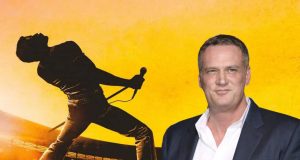
In Spanish
The creative process behind the production of
Bohemian Rhapsody
Hi John,
First of all, thank you so much for this opportunity, answering BSOSpirit some questions about your work editing the film.
My pleasure, happy to do it.
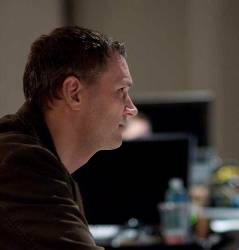 Ok, to begin with, could you explain to us the process you follow from the filming of the movie to the first choices in the editing room to the decisions that gave shape to the storytelling, focusing in your previous works and then into Bohemian Rhapsody? Ok, to begin with, could you explain to us the process you follow from the filming of the movie to the first choices in the editing room to the decisions that gave shape to the storytelling, focusing in your previous works and then into Bohemian Rhapsody?
Well, while we are filming, I’m just really trying to keep up and create the scenes while tons of footage are being unloaded on me. I think we shot nearly 2,000,000 feet a film on this. The shaping of the overall story begins when I have a series of scenes that I’ve put together that connect. The macro view of a movie is just as important as the individual scenes and the editorial artistry within them. Many times, attention is placed upon these individual moments, but an editor’s biggest task is to shape the overall story utilizing all of the things required to do that successfully, including politics with the studio, producers, test screenings, creative debates and so forth. But at the end of the day, it really is about storytelling, passion and taste. Biopics are particularly difficult, in that you must condense a large portion of someone’s life into a couple of hours. This one was even more difficult because it’s also a biopic about the band – AND it had to be entertaining.
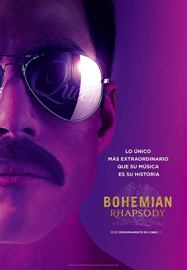 What was particular to this film apart from not composing the score too this time, and when did you realize an original score was not needed in this case to keep the narrative pure? What was particular to this film apart from not composing the score too this time, and when did you realize an original score was not needed in this case to keep the narrative pure?
Well, aside from Valkyrie –which was the closest film that I’ve done relating to real- events- a biopic being about such a famous and revered musician was the most unique aspect of it for me. This was dealing with someone’s real life, a famous band’s rise to fame, and featuring iconic music, of course.
The intention in everyone’s mind was that there would be an underscore for the dramatic scenes. But I really had it in the back of my mind that it wouldn’t happen. I didn’t see where score made sense in this film. About three-quarters of the way into editing I realized it would be a mistake and took my composer credit off the title sequence I created. I decided to use source music instead, even if it wasn’t Queen. When Freddie proposes to Mary or when he’s at home alone I used opera music because he 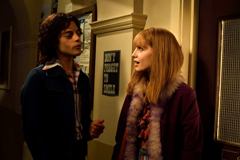 listened to opera. For instance, for the diagnosis, I used «Who Wants to Live Forever» in separate tracks. I took out of the vocals and re-edited the music so it was almost like a score. I felt it made a more pure movie without it being typical film music. And when Mary and Freddie break up, I used the Brazilian concert, where “Love of My Life” plays on the TV set. This was far more emotional and poignant than using film music. So yes, it did keep the film more pure and timeless by doing this. And it was quite a sacrifice on my part. listened to opera. For instance, for the diagnosis, I used «Who Wants to Live Forever» in separate tracks. I took out of the vocals and re-edited the music so it was almost like a score. I felt it made a more pure movie without it being typical film music. And when Mary and Freddie break up, I used the Brazilian concert, where “Love of My Life” plays on the TV set. This was far more emotional and poignant than using film music. So yes, it did keep the film more pure and timeless by doing this. And it was quite a sacrifice on my part.
Ok. Can you share with us some pointers of how to structure the editing of a movie not to get lost in hours and hours of footage, and how do you decide which path should be followed in the earlier stages of the work?
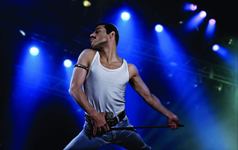 It’s hard to describe. You must have a sort of sixth sense as to what is going to end up in the film or not. And depending upon your influence, you can just make some of these decisions right away. I tend to do that. There were some early scenes that I put together and realized in a very early cut of the film that they would never make it in the final product. So, I just let them go right away. This made it much easier to shape by getting rid of the fat. I would still have those scenes available though. So, if we screened the movie for an audience and they felt something was lacking, I would still have them at my disposal. It’s hard to describe. You must have a sort of sixth sense as to what is going to end up in the film or not. And depending upon your influence, you can just make some of these decisions right away. I tend to do that. There were some early scenes that I put together and realized in a very early cut of the film that they would never make it in the final product. So, I just let them go right away. This made it much easier to shape by getting rid of the fat. I would still have those scenes available though. So, if we screened the movie for an audience and they felt something was lacking, I would still have them at my disposal.
Again, the path is hard to describe. The bottom line is that when I sit back and watch, I just want to be engaged, moved emotionally, entertained, not bored or confused. If all of those things are happening for me as the viewer, then the story is working.
Perfect. I have read that the first scenes to be filmed were those recreating masterfully the historic Live Aid concert at the Wembley Stadium, were those scenes and the editorial work to find the exhilarating result within the film a challenge or you found the right flow early on?
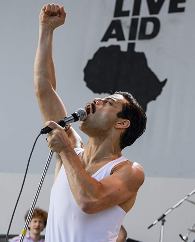 Live Aid is what kept me up at night for year. I have referred to it as our ‘Death Star sequence’, because the movie is constantly alluding to and building up to this event. I knew that it would have to be cathartic and emotional and utterly satisfying. So, I was always working on it when I had some free time during the shaping of the rest of the movie. If I had any moment to myself, I would go back to Live Aid. We knew the film would live or die by it. As with the other concerts, the more I involved the audience, the more emotional it was. So, with the audio and the visuals I really wanted us to feel them. After all, that’s what Freddie and Queen were all about, involving the audience. Live Aid is what kept me up at night for year. I have referred to it as our ‘Death Star sequence’, because the movie is constantly alluding to and building up to this event. I knew that it would have to be cathartic and emotional and utterly satisfying. So, I was always working on it when I had some free time during the shaping of the rest of the movie. If I had any moment to myself, I would go back to Live Aid. We knew the film would live or die by it. As with the other concerts, the more I involved the audience, the more emotional it was. So, with the audio and the visuals I really wanted us to feel them. After all, that’s what Freddie and Queen were all about, involving the audience.
And every time I would show the audience, there was a visual effects cost, of course. There were budgetary considerations in the design of the sequence. So as the concert evolved, I showed more and more audience to keep it building to the end. There are also cuts in this sequence for time. So this became a challenge in all of the concerts. Obviously, it could not be in its full length. But if the audience sensed that there were cuts being made, the sequence would collapse like a house of cards. It had to feel like a real-time experiential event. If it felt like a montage, it would never have the emotion of feeling like you were there, experiencing Freddie with his audience, his swansong in a sense.
Fantastic to see this process through your eyes, wow!, thanks!. Let’s talk about the acting. The Performance by the whole cast is flawless and quite magnificent, specially in my humble opinion, Rami Malek and Lucy Boynton, how do you deal with the pressure when you are watching such incredible work not to interrupt the flow of the acting and enhance the work of the actors telling the story visually and with perfect rhythm at the same time?
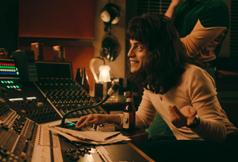 Not to take away anything from the terrific actors, but performances are also either defined in the editing room, or, at the very least, refined. The editor even shapes terrific actors by varying the reactions, giving an ebb and flow to their performances, sifting through thousands of feet of footage of angles and takes, finding acting nuances as brief as a nose twitch, and tastefully bringing out the best the actor had to give. The editor also dubs in alternate line readings –even syllables– from other takes into the lips of another take. There’s a whole bag of tricks. The editor also defines or greatly enhances the chemistry between characters by the sly use of reactions and timing. Not to take away anything from the terrific actors, but performances are also either defined in the editing room, or, at the very least, refined. The editor even shapes terrific actors by varying the reactions, giving an ebb and flow to their performances, sifting through thousands of feet of footage of angles and takes, finding acting nuances as brief as a nose twitch, and tastefully bringing out the best the actor had to give. The editor also dubs in alternate line readings –even syllables– from other takes into the lips of another take. There’s a whole bag of tricks. The editor also defines or greatly enhances the chemistry between characters by the sly use of reactions and timing.
I also sift through improvised lines and essentially script out the scene in the editing room so that those improvisations look as if they were designed. For instance when the band puts «Bohemian Rhapsody» together in the studio barn, there was a lot of improvised moments where an actor wasn’t really talking to the other actor. So the reactions had to be concocted from one gag to the other. It’s a truly agonizing thing to plot out a sequence like this as an editor, but the payoff is great because the scene feels very real.
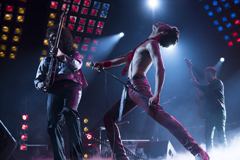 Having said all that, yes, the primary goal was to let the performances shine, especially for Freddie. He had to be likable and not wear thin on the audience. He’s in almost every scene of the film! So it was imperative to keep him engaging, fun and enthralling. As this is everything in film making, it’s a community effort. No one of us can do it completely on our own. I had terrific material to work with though. All of the actors were strong and brought wonderful things to the table. Having said all that, yes, the primary goal was to let the performances shine, especially for Freddie. He had to be likable and not wear thin on the audience. He’s in almost every scene of the film! So it was imperative to keep him engaging, fun and enthralling. As this is everything in film making, it’s a community effort. No one of us can do it completely on our own. I had terrific material to work with though. All of the actors were strong and brought wonderful things to the table.
Awesome, finally, to conclude, we would like to say that your editing for the movie is an early contender for the Awards Season, which are your expectations?. I know you are a humble person and you probably don’t expect anything, but please, believe us, your work is astounding and deserve all the recognition, so we are crossing fingers and wishing you the very best.
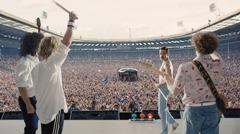 I’m very glad people are recognizing the work. I did work really hard on this film, and still saw it through on my own. Like I said, it was a sacrifice, but a labour of love. I would love for people to be able to divorce themselves from any behind-the-scenes drama that may have occurred on the film and reward it purely on its merits and recognize everyone who worked so hard to get it on the screen. Let’s just say, I won’t be getting up early that morning to see the nomination announcements. That doesn’t mean I don’t think I deserve it, haha. But, there’s a lot of good work out there, and as you know, lots of politics! I’m very glad people are recognizing the work. I did work really hard on this film, and still saw it through on my own. Like I said, it was a sacrifice, but a labour of love. I would love for people to be able to divorce themselves from any behind-the-scenes drama that may have occurred on the film and reward it purely on its merits and recognize everyone who worked so hard to get it on the screen. Let’s just say, I won’t be getting up early that morning to see the nomination announcements. That doesn’t mean I don’t think I deserve it, haha. But, there’s a lot of good work out there, and as you know, lots of politics!
Well, John, thanks so much for your time and for answering all these questions for BSOSpirit, John.
Sure, no problem.
All our best wishes for your upcoming projects and the Awards Season.
Thank you!
Questions, interview and translation into Spanish by Asier G. Senarriaga
|
Author

Asier G. Senarriaga
BIO:
In addition to being a famous film composer, John Ottman has in his filmography a dozen films as a professional editor, especially for director Bryan Singer, who has been behind the cameras of this biopic of Queen, ‘Bohemian Rhapsody’. John has even directed Urban Legends: Final Cut (2000), a film in which he was also a composer and editor. In this interview he talks about this facet that we could consider secondary in his cinematographic work. |
No hay comentarios